A suite of samples was collected from the
greenbushes pegmatite mine which produces tin, tantalum and some
Li-spodumene from near the town of Greenbushes, about 80 Km SE
of Perth in South-west Western Australia.
Location
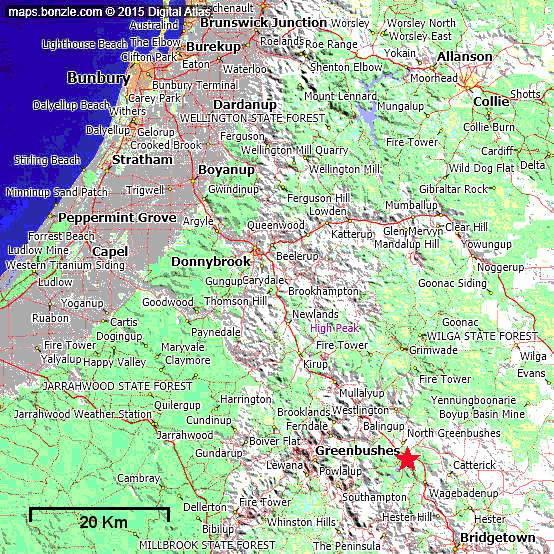
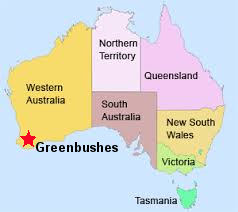
Summary
Samples from Greenbushes show only low to moderate intensity of
decrepitation and only rarely show low temperature decrepitation
below 350 C, indicating the absence of CO
2 rich
fluids. There are minor changes in the shapes of the
decrepitation peak at 450 C but it is not possible to determine
the exploration significance (if any), of these variations based
on the limited number of samples in this study.
Samples of beryl do show decrepitation and also the presence of
traces of CO
2 rich fluid.
Results
Moderate intensity of decrepitation, with no low temperature
peak and hence no CO
2 rich inclusions.
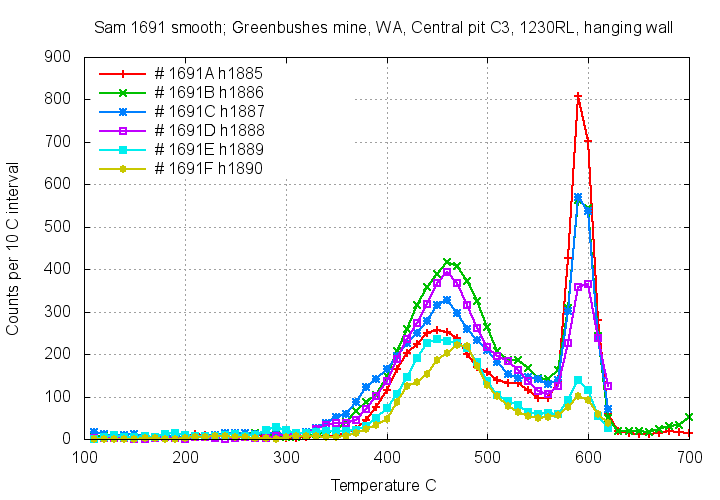
All of these samples show very similar fluid inclusion
populations at this location
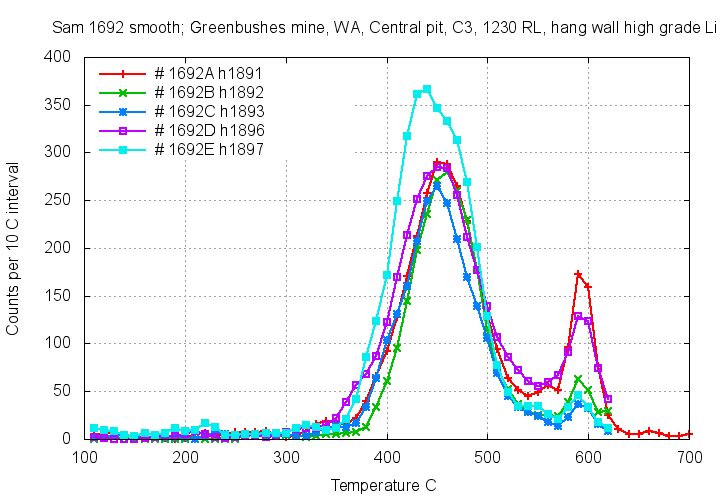
The differences between these samples probably reflect zonal
differences in the pegmatite at this location.
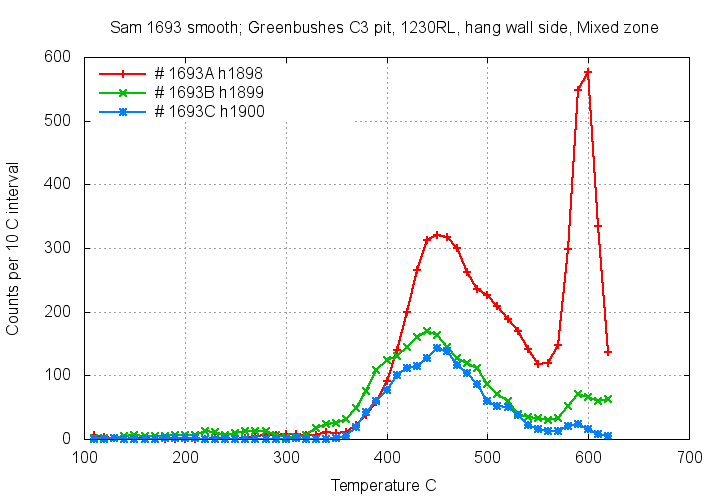
Only sample 1695A (red) shows low temperature decrepitation at
250 C indicating the presence of a minor amount of CO
2
rich fluids.
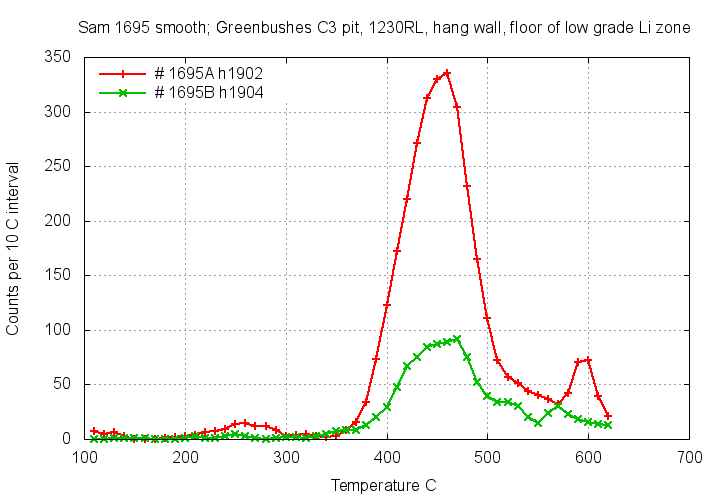
Although beryl samples show only weak decrepitation, the
decrepitation below 300 C shows that the fluids contained low
levels of CO
2.
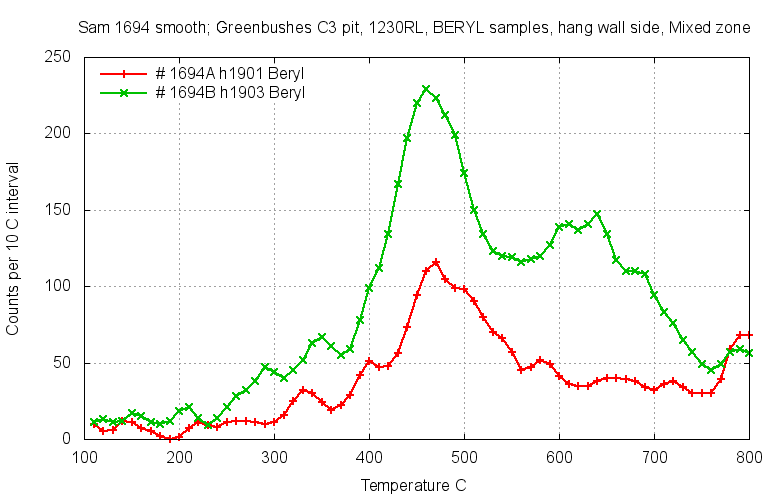
 Applied Mineral Exploration
Applied Mineral Exploration Discussion and research relevant to mineral
exploration.
Discussion and research relevant to mineral
exploration. 





